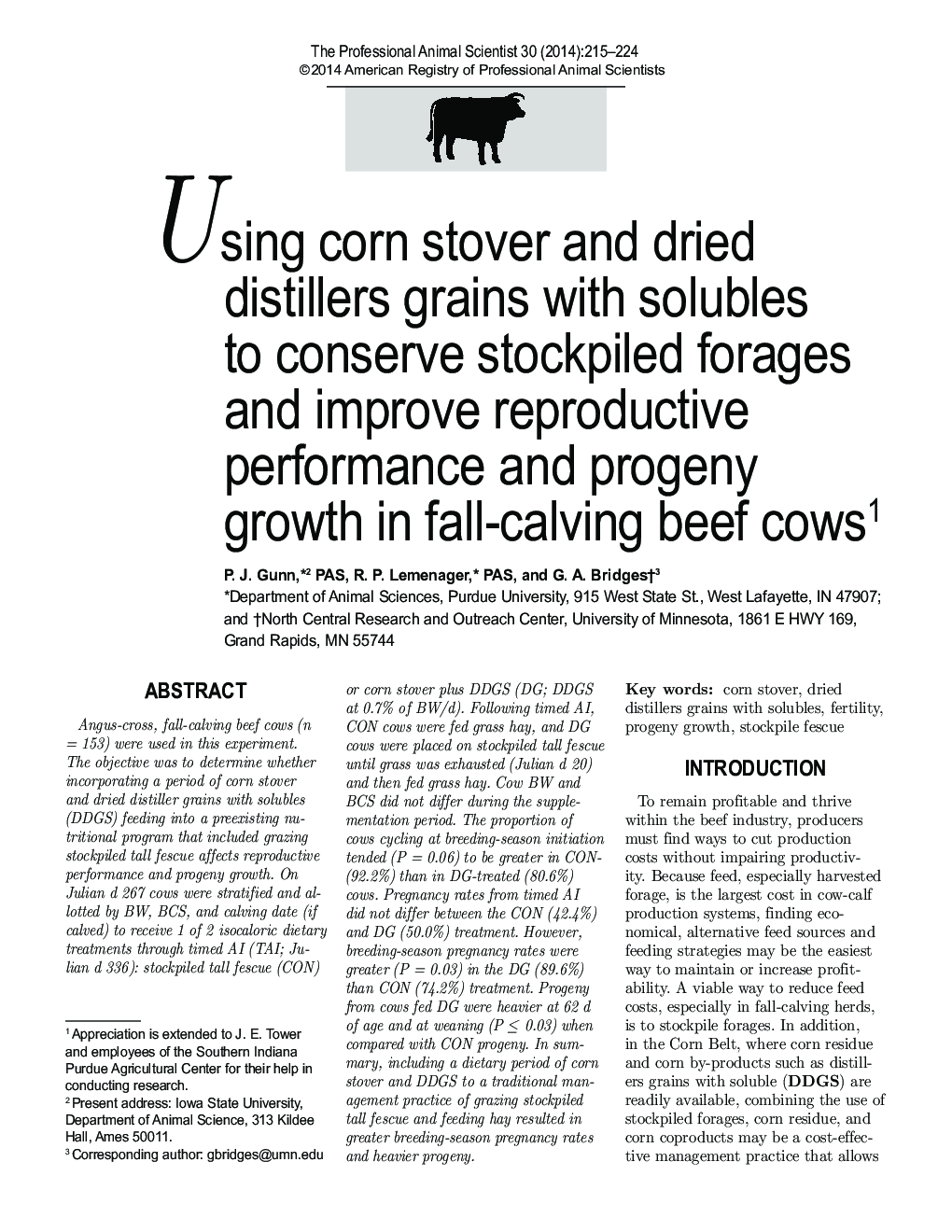| Article ID | Journal | Published Year | Pages | File Type |
|---|---|---|---|---|
| 2453882 | The Professional Animal Scientist | 2014 | 10 Pages |
Abstract
Angus-cross, fall-calving beef cows (n = 153) were used in this experiment. The objective was to determine whether incorporating a period of corn stover and dried distiller grains with solubles (DDGS) feeding into a preexisting nutritional program that included grazing stockpiled tall fescue affects reproductive performance and progeny growth. On Julian d 267 cows were stratified and allotted by BW, BCS, and calving date (if calved) to receive 1 of 2 isocaloric dietary treatments through timed AI (TAI; Julian d 336): stockpiled tall fescue (CON) or corn stover plus DDGS (DG; DDGS at 0.7% of BW/d). Following timed AI, CON cows were fed grass hay, and DG cows were placed on stockpiled tall fescue until grass was exhausted (Julian d 20) and then fed grass hay. Cow BW and BCS did not differ during the supplementation period. The proportion of cows cycling at breeding-season initiation tended (P = 0.06) to be greater in CON-(92.2%) than in DG-treated (80.6%) cows. Pregnancy rates from timed AI did not differ between the CON (42.4%) and DG (50.0%) treatment. However, breeding-season pregnancy rates were greater (P = 0.03) in the DG (89.6%) than CON (74.2%) treatment. Progeny from cows fed DG were heavier at 62 d of age and at weaning (P ⤠0.03) when compared with CON progeny. In summary, including a dietary period of corn stover and DDGS to a traditional management practice of grazing stockpiled tall fescue and feeding hay resulted in greater breeding-season pregnancy rates and heavier progeny.
Related Topics
Life Sciences
Agricultural and Biological Sciences
Animal Science and Zoology
Authors
P.J. PAS, R.P. PAS, G.A. Bridges,
